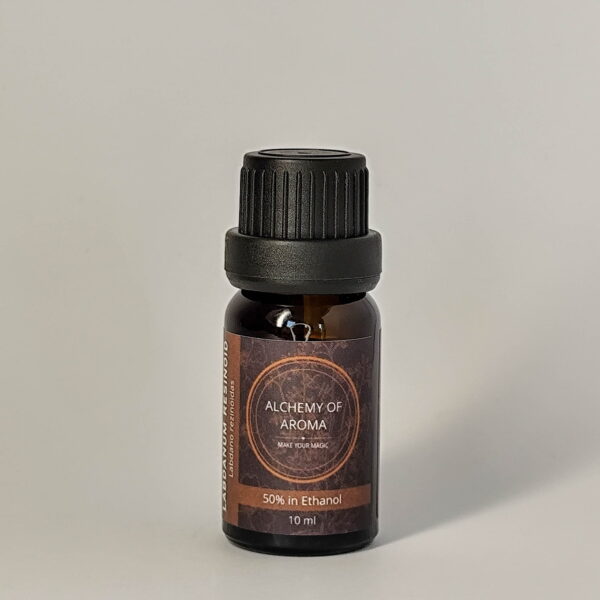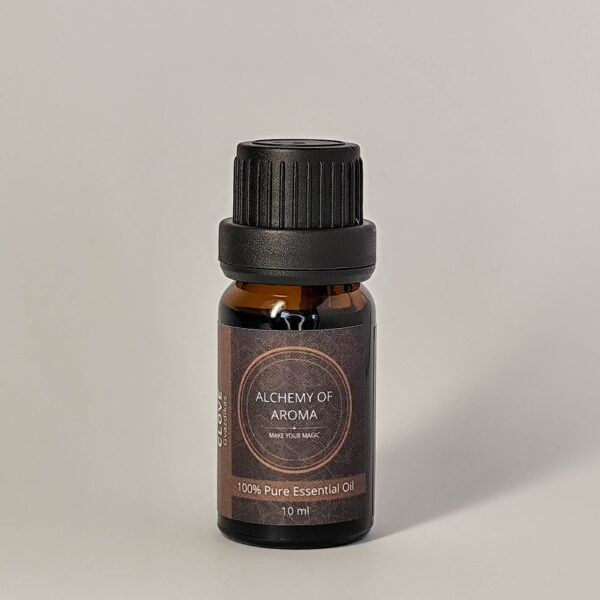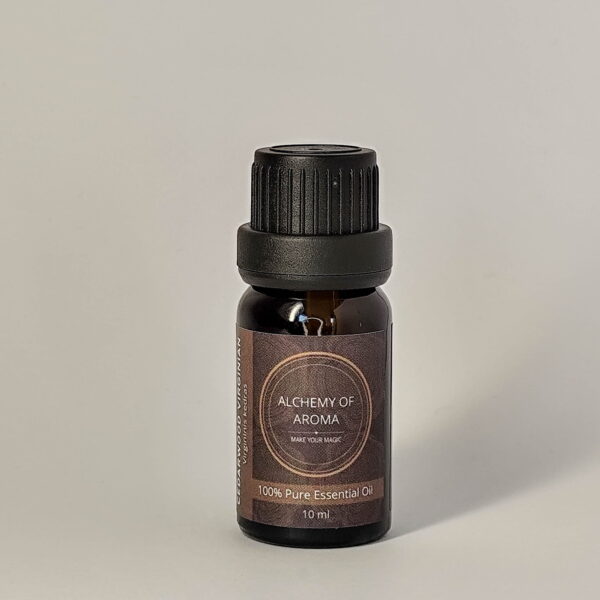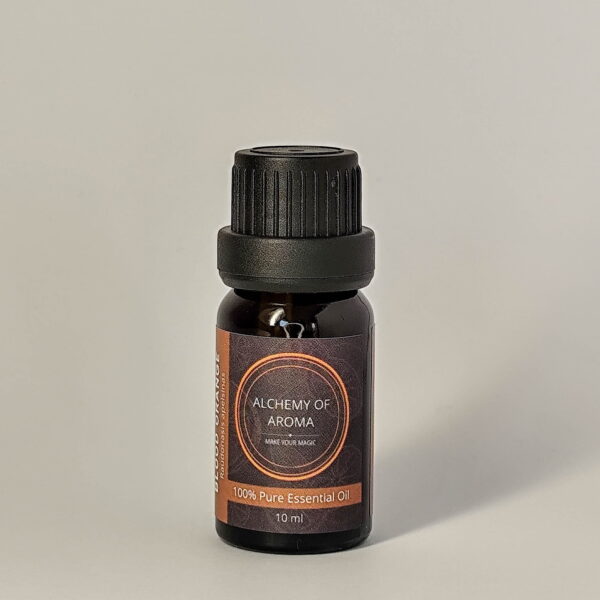Bergamot Essential Oil
Botanical Name: Citrus bergamia
Extraction Method: Cold Pressed
Plant Part: Fruit Peel
Country of Origin: Italy
Appearance: Clear to pale greenish-yellow liquid
Aroma: Fresh, sweet, and citrusy with a light floral undertone, slightly less bitter than regular bergamot essential oil
Perfumery note: Top
10 ml (Bergaptene-free)
9,99 €
Bergamot Essential Oil
Botanical Name: Citrus bergamia
Extraction Method: Cold Pressed
Plant Part: Fruit Peel
Country of Origin: Italy
Appearance: Clear to pale greenish-yellow liquid
Aroma: Fresh, sweet, and citrusy with a light floral undertone, slightly less bitter than regular bergamot essential oil
Perfumery note: Top
10 ml (Bergaptene-free)
9,99 €
- Product description
- Guidelines for perfumery
- Guidelines for aromatherapy
- Safety tips
Bergamot essential oil is a highly esteemed ingredient in the world of perfumery. It has a distinct and multifaceted scent profile, characterized by fresh, citrusy, and slightly floral notes. This complexity makes it a favored top note in many perfumes, providing an immediate burst of freshness that captures attention. Moreover, the bergaptene-free variant of bergamot essential oil is particularly advantageous for topical applications. Scientific studies have shown the potential health benefits of bergamot essential oil. It possesses antibacterial and anti-inflammatory properties, which can reduce inflammation and soothe irritated skin. In aromatherapy, when diffused or inhaled, the oil’s fresh, citrusy aroma can uplift the mood, reduce anxiety, and promote relaxation.
Uses in Perfumery:
- Top Note: Bergamot oil is often used as a top note in perfumes due to its fresh, sweet, and citrusy aroma. It provides an immediate burst of freshness that is bright and uplifting.
- Blending Ingredient: Bergamot essential oil blends exceptionally well with other citrus oils, floral notes, and even woody and spicy elements. This versatility makes it a key component in creating complex and balanced fragrance compositions.
- Unisex Appeal: The light and refreshing scent of bergamot is widely appreciated in both men’s and women’s fragrances. It adds a lively and dynamic element that is universally appealing.
Aromatherapy benefits:
- Mood Enhancement: The uplifting and invigorating scent of bergamot oil can help improve mood and reduce feelings of anxiety and depression. Diffusing the oil or inhaling its aroma can create a positive and energizing atmosphere.
- Sleep Aid: The calming effects of bergamot essential oil can also aid in promoting better sleep. Diffusing the oil in the evening or adding it to a bedtime routine can help improve sleep quality.
- Skin Care: When diluted and applied topically, bergaptene-free bergamot oil can benefit the skin by promoting a clear and radiant complexion. Its antiseptic and anti-inflammatory properties help to reduce acne, blemishes, and oily skin.
What does Bergaptene-Free mean?
Bergaptene, also known as bergamotene or bergapten, is a naturally occurring furocoumarin found in bergamot essential oil. This compound is known for its phototoxic properties, which can cause skin irritation and pigmentation changes when the skin is exposed to sunlight after application. Bergaptene-free bergamot essential oil has undergone a special process to remove this compound, making it non-phototoxic and safer for topical use, even when exposed to sunlight.
Related
Understand the Notes:
- Top Notes: Light, fresh, and evaporate quickly (e.g., citrus oils like lemon and bergamot).
- Middle Notes: The heart of the fragrance, balancing top and base notes (e.g., lavender, rosemary).
- Base Notes: Long-lasting and grounding (e.g., vetiver, patchouli, sandalwood).
Creating a Blend:
- Start with a 30:50:20 ratio of top, middle, and base notes.
- Experiment with different combinations to find your unique scent.
Dilution:
- Always dilute essential oils in a carrier oil (such as jojoba, sweet almond, or fractionated coconut oil) or alcohol (like perfumer’s alcohol) before applying to the skin.
- A common ratio is 15-30 drops of essential oil per 30ml (1 ounce) of carrier oil.
Aging Your Blend:
- Allow your blend to age for at least a few days, preferably a few weeks, to let the scents meld and mature.
- Store in a cool, dark place and shake occasionally.
Inhalation:
- Diffusers: Add 5-10 drops of essential oil to an ultrasonic diffuser filled with water.
- Steam Inhalation: Add 1-2 drops to a bowl of hot water, cover your head with a towel, and inhale deeply.
Topical Application:
- Dilution: Dilute essential oils in a carrier oil before applying to the skin. A common dilution is 2-3 drops per teaspoon (5ml) of carrier oil.
- Massage: Use the diluted oil for a soothing massage. Common areas include the neck, shoulders, and feet.
- Roller Bottles: Fill a roller bottle with a carrier oil and add essential oils. Apply to pulse points like wrists, temples, and behind the ears.
- Patch Test: Before using a new product on your skin, perform a patch test. Apply a small amount of the diluted product to a patch of skin and wait 24 hours to check for any adverse reactions.
- Avoid Sensitive Areas: Do not apply to sensitive areas such as the eyes, ears, mucous membranes, or broken skin.
- Pregnancy and Nursing: Consult a healthcare professional before using our products if you are pregnant, nursing, or have a medical condition.
- Children and Pets: Use caution when using our products around children and pets. Always research or consult a professional regarding safe usage.
- Photosensitivity: Certain essential oils, especially citrus oils like bergamot, lemon, and lime, can cause photosensitivity, increasing the risk of sunburn. Avoid sun exposure for 12-24 hours after applying these oils to the skin.
- Storage: Store in a cool, dark place, away from direct sunlight and heat. Keep them out of reach of children and pets.







